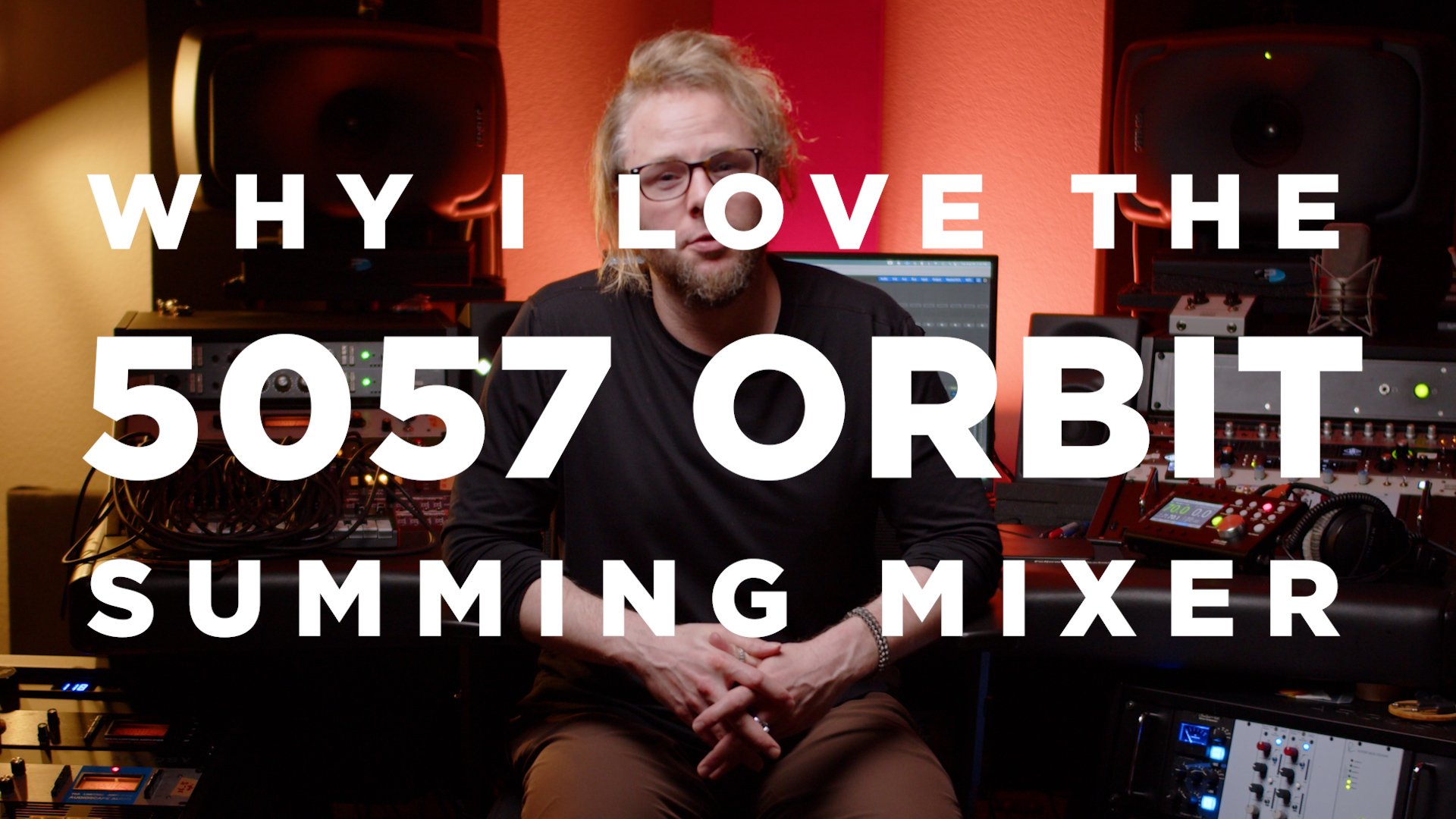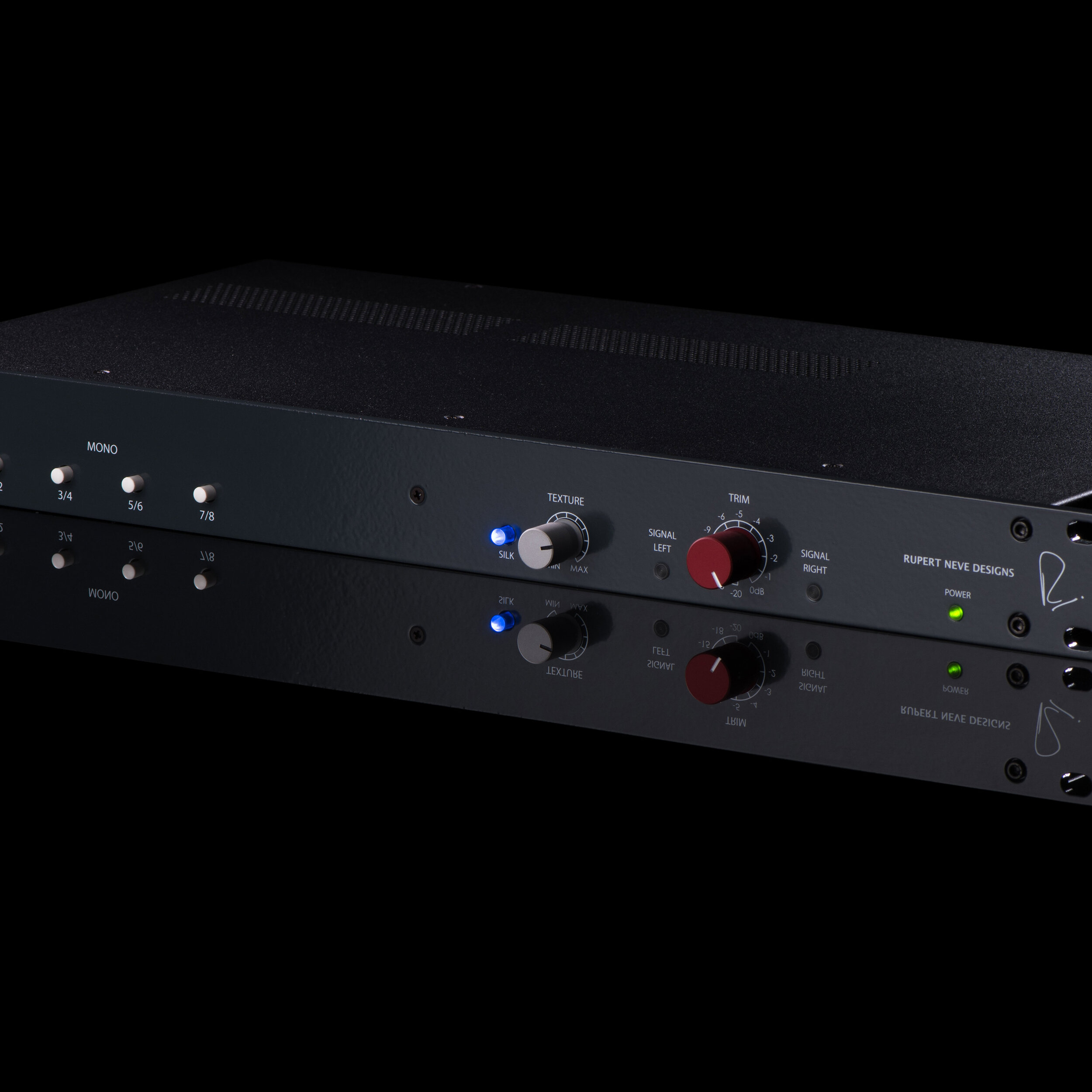
5057 ORBIT
16 x 2 Summing Mixer
OVERVIEW / MEDIA / FEATURES / REVIEWS / SPECS & RESOURCESAll the tone, power, and depth of a Rupert Neve console in a single rack space.
Firmly rooted in six decades of console design experience, the 5057 Orbit gives your mixes the legendary tonality, power, and wide-open soundstage that only Rupert Neve’s class-A analog summing can provide. Coupled with Rupert’s famous custom audio transformers and Silk Red & Blue circuitry for variable harmonic saturation, the Orbit launches sterile in-the-box mixes to new heights of tone, depth and clarity – without compromising the recallable convenience and repeatability of your DAW-based workflow.
“I plugged this thing in and about three minutes later I was like, ‘that’s it’...it really does give everybody the chance to have a console.”
When you push a mix bus and output transformers towards saturation, the non-linear, musical harmonics that occur are what truly glue a recording together and bring it to life.
Rather than using an external summing solution that offers little more than an ultra-clean representation of the in-the-box experience, the Orbit provides the extraordinary richness, harmonic complexity and depth that only a Rupert Neve console can bring to your mixes.
The Orbit utilizes a highly custom output transformer configuration originally developed for the acclaimed Shelford Channel, which provides both a Main Output and a -6dB Output – the latter of which enables you to fully drive the Orbit to achieve more transformer harmonics without clipping the next device in the chain. This unique transformer drive is a hallmark of the sound of Rupert Neve throughout the years – and the sound of countless classic hit records.
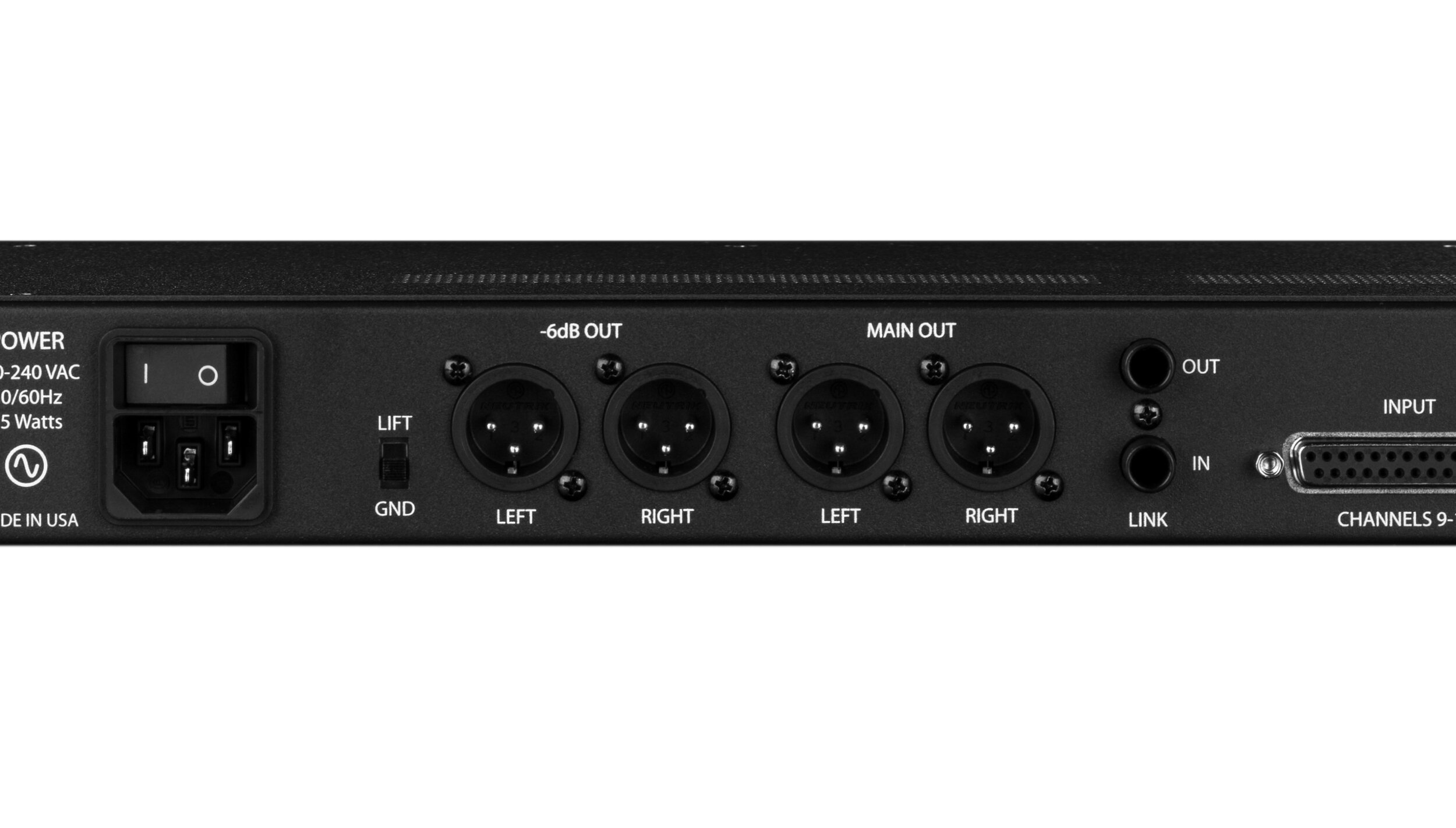
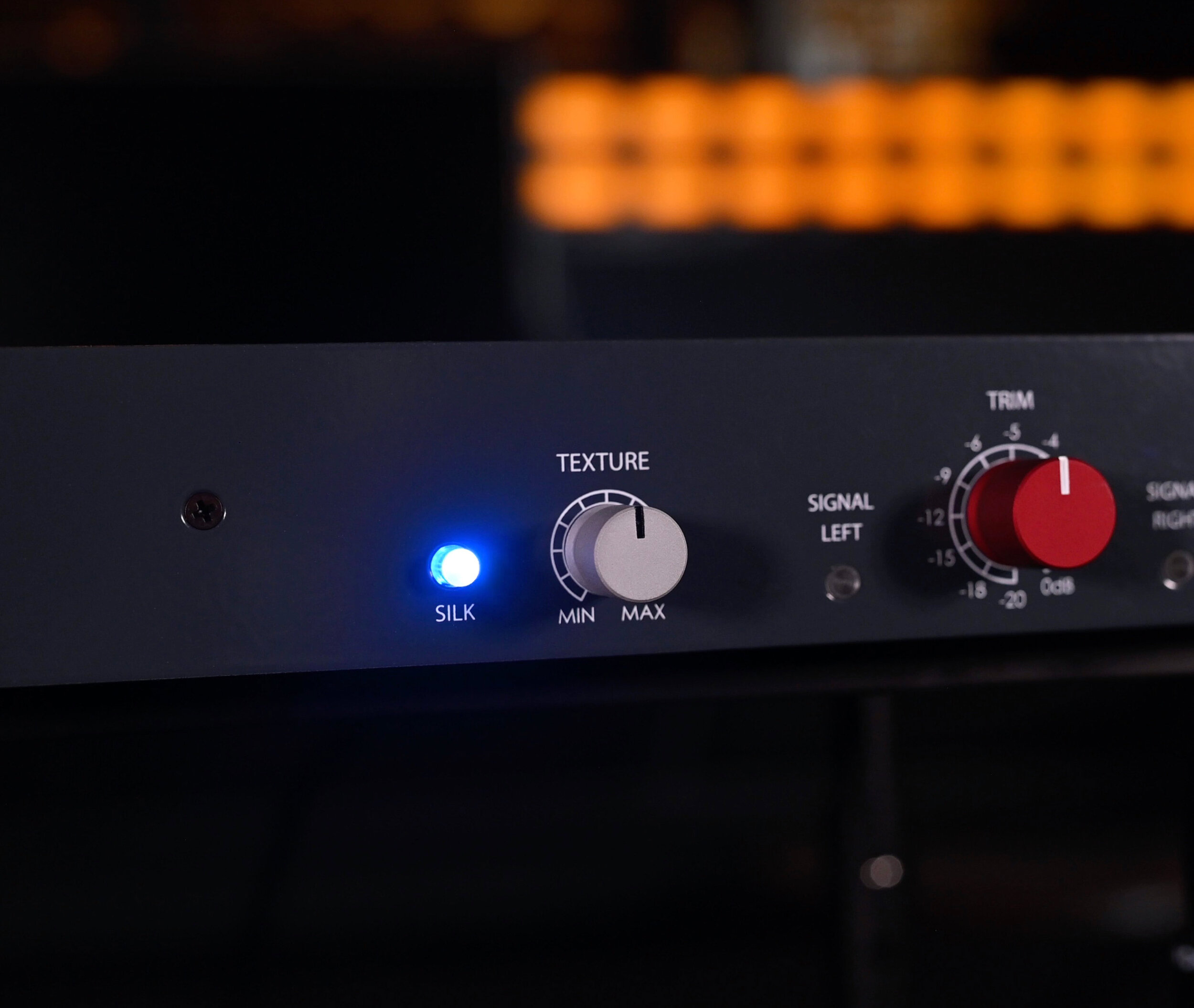
Classic Sounds on Demand
Every mix demands its own treatment. In addition to the choice of outputs, the continuously variable Texture control with Silk Red and Silk Blue modes gives you complete control over the harmonic density and tonality of your mix – or lets you keep it utterly pristine and uncolored.
The Silk Red mode accentuates transformer saturation in the high and high-mid frequencies to amplify the vibrant midrange harmonics associated with Rupert’s vintage equipment, while Silk Blue accentuates saturation of the lows and low-mids to add thickness and weight to any source – especially useful for “thin-sounding” mixes. Unlike EQ, these Silk & Texture controls saturate the output transformers, and add highly musical harmonics to the source material according to the amount of Texture applied.
Drive the mix bus hard, choose your Silk flavor, and crank the Texture knob for a rich, saturated, vintage vibe – or disengage Silk entirely for clear, wide-open sonic beauty. The choice is yours.
Build your Dream
While the Orbit is an extremely effective tool on its own, multiple units can be combined through the Bus Link for a higher channel count. The 5057 Orbit can also be used as a building block in an expandable summing system utilizing the 5059 Satellite for flexible summing & routing, and the 5060 Centerpiece for additional mixing and monitoring features.
These units create the core of a world-class analog modular console system rivaling any traditional large-scale studio setup.
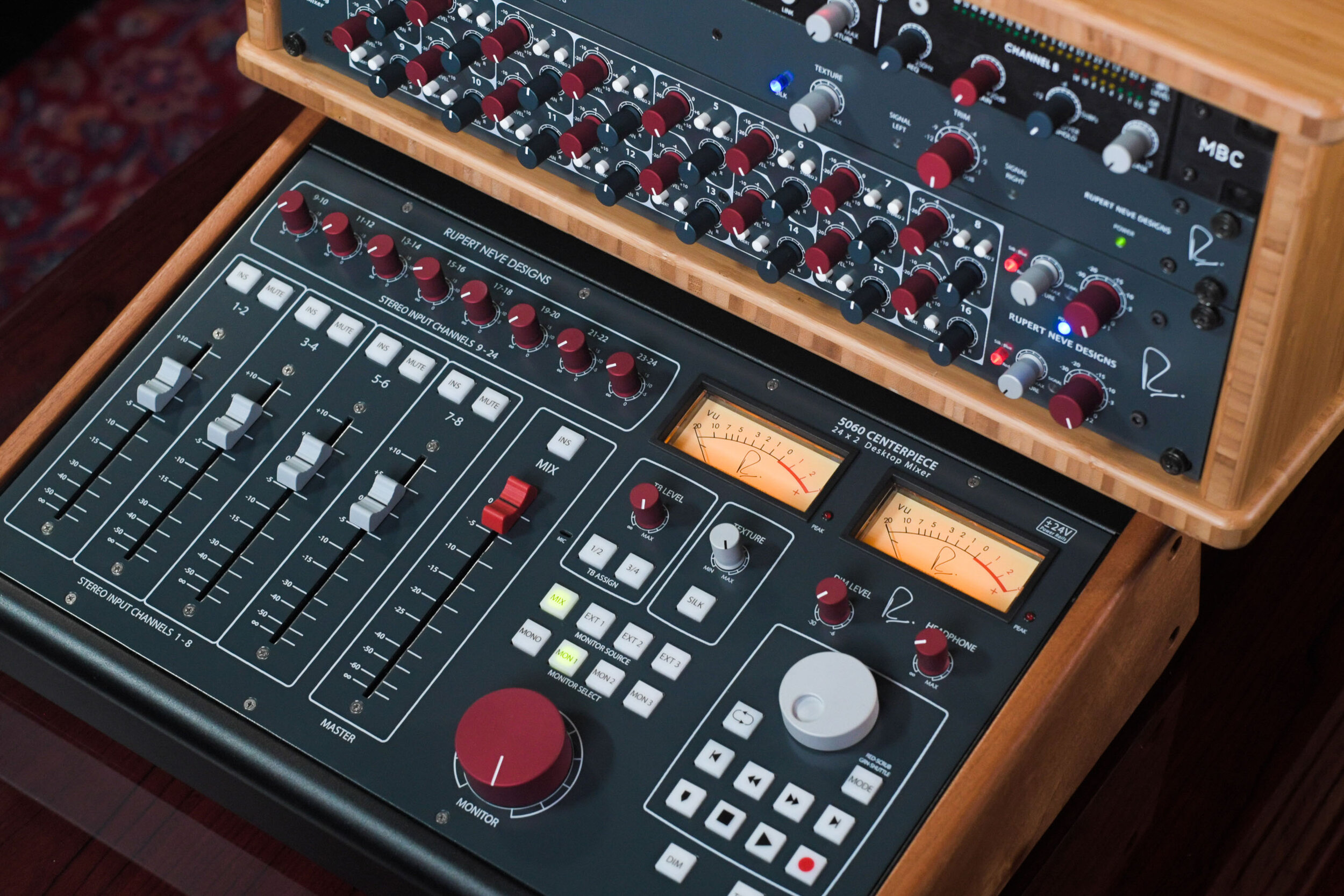
DAW Based Recall without Compromise
Frequent recalls can be a challenge for modern mix engineers. The Orbit’s elegant simplicity and fixed level accuracy provides rapid, repeatable DAW-based recall from mix to mix, while adding the rich, unrivaled sound quality of Mr. Neve’s class-A transformer-coupled mix bus.
Channel Separation and Accuracy
With precisely fixed channel levels and accurate mix bus attenuation via high-quality stepped switching, the Orbit’s purist signal path has vanishingly low crosstalk, and channels matched to within +/-0.1dB. This provides your mixes with the widest and most accurate stereo image, the greatest depth, and the most direct signal path, allowing you to hear every single detail of your mixes.
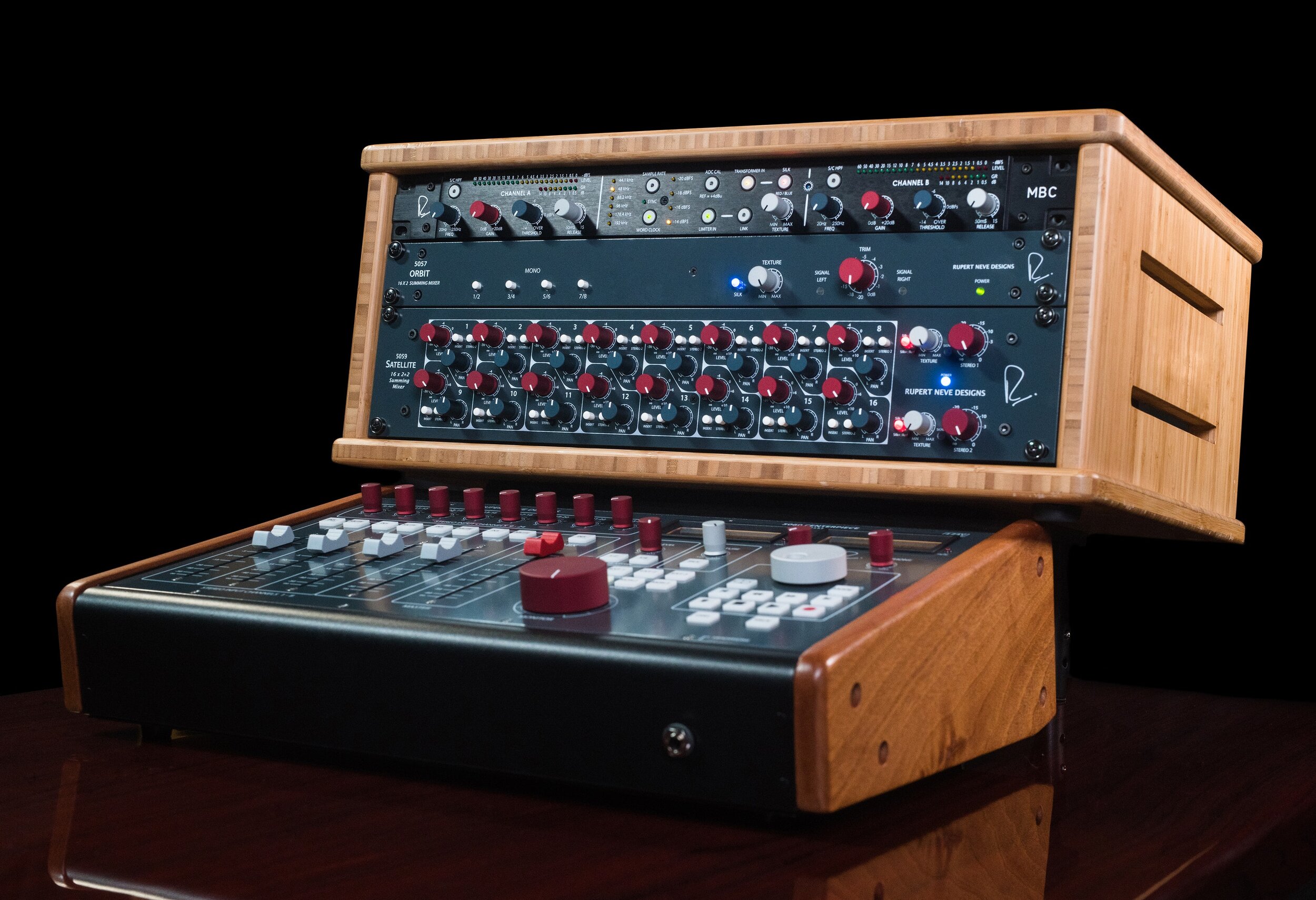
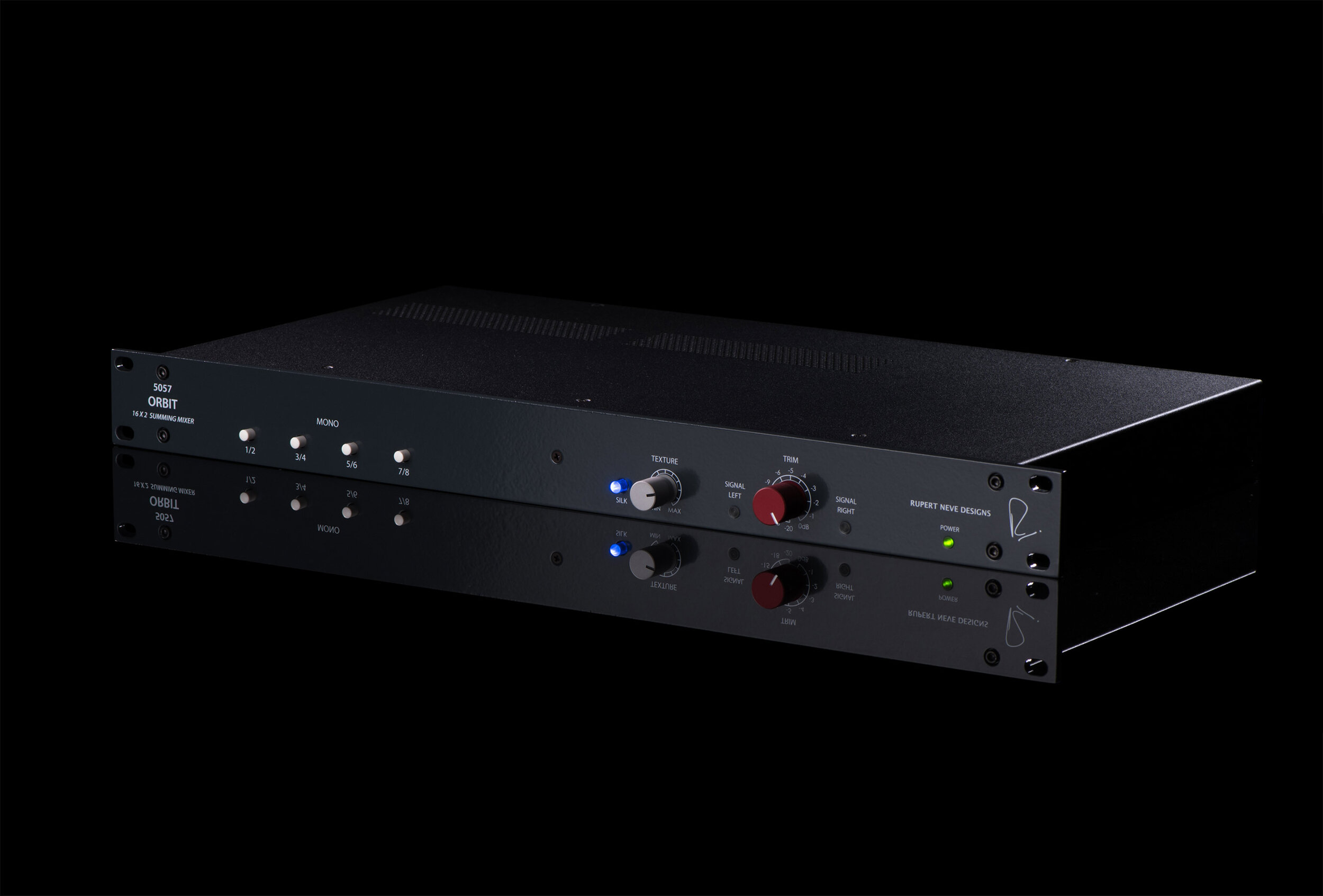

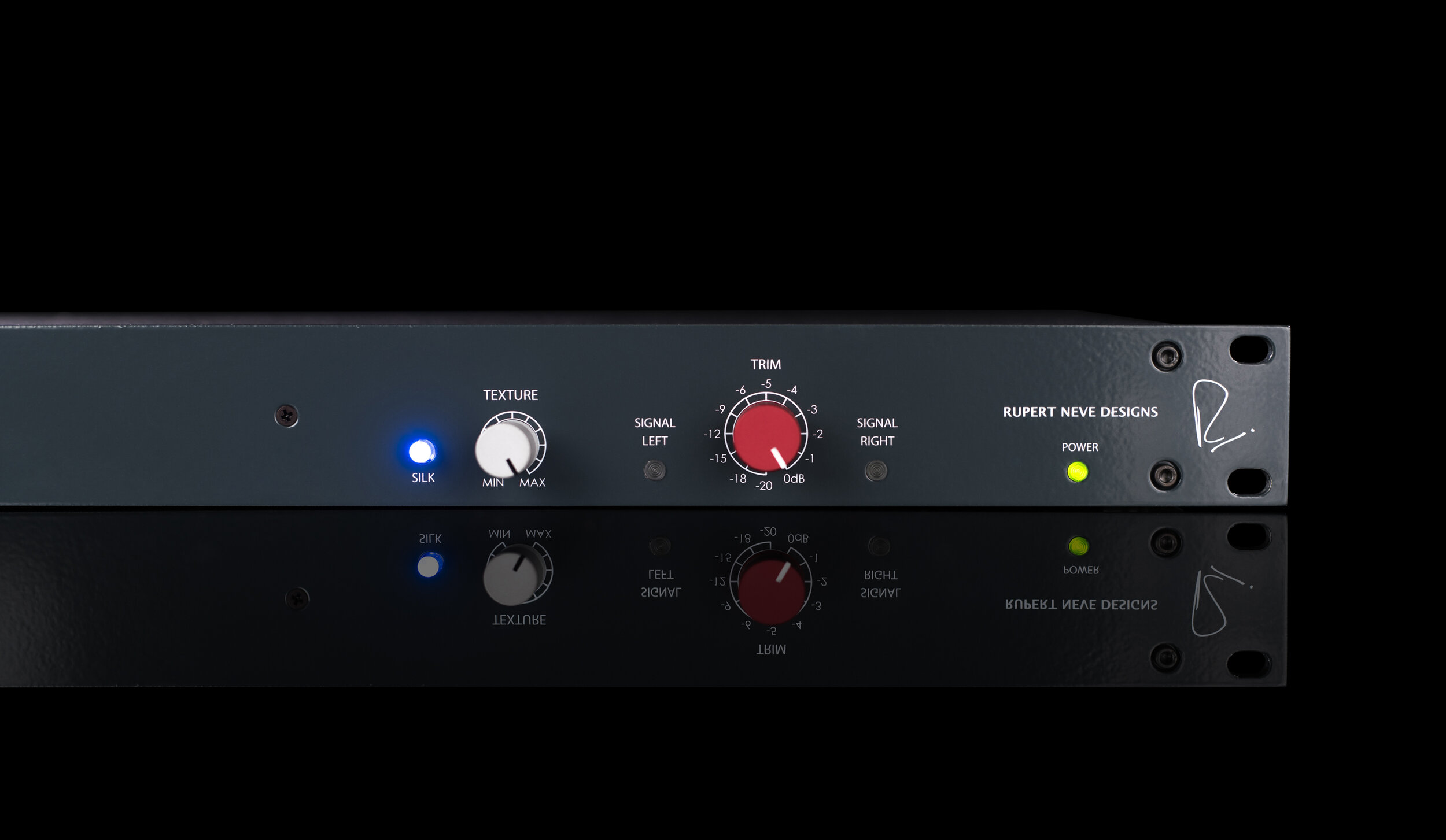
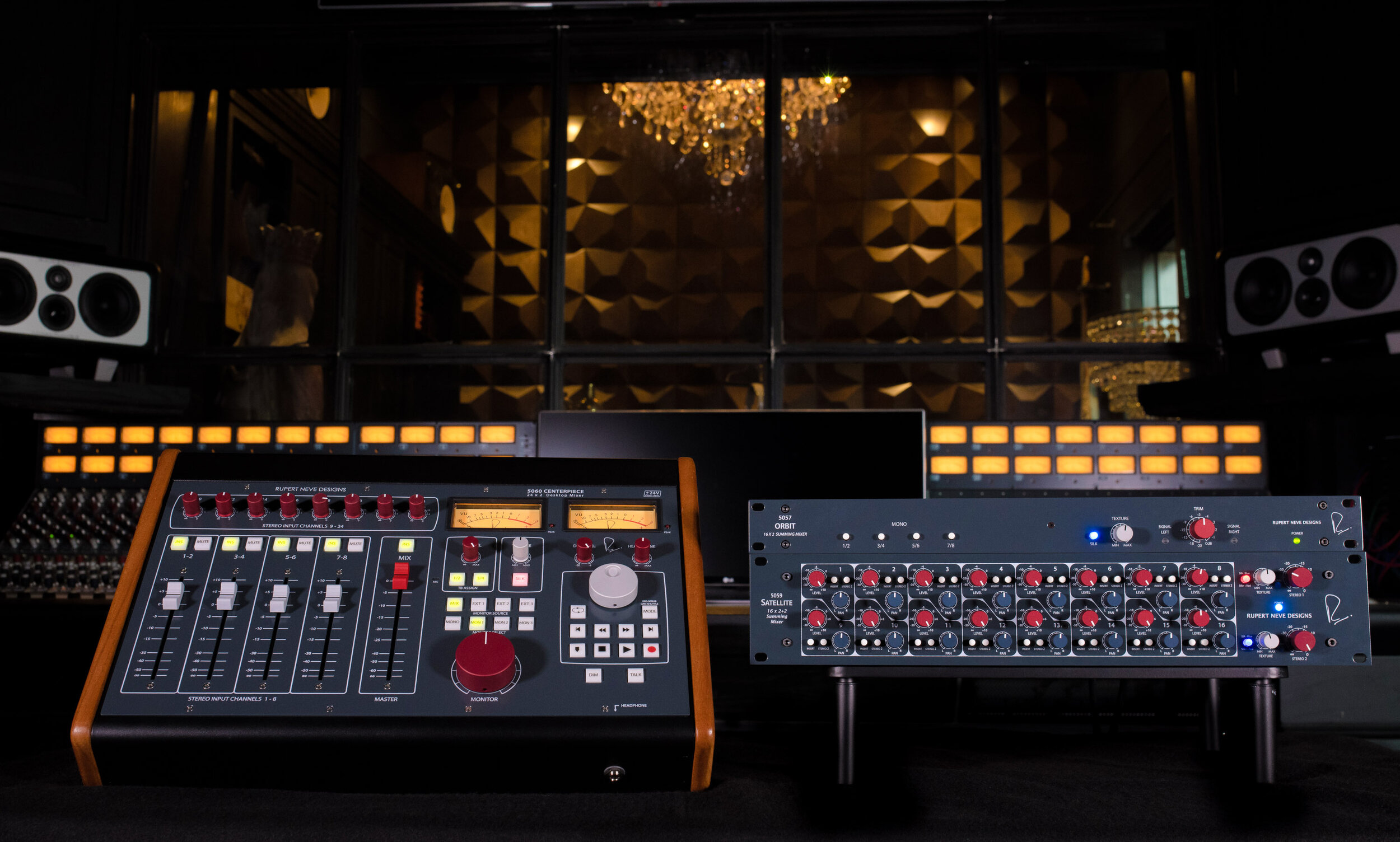
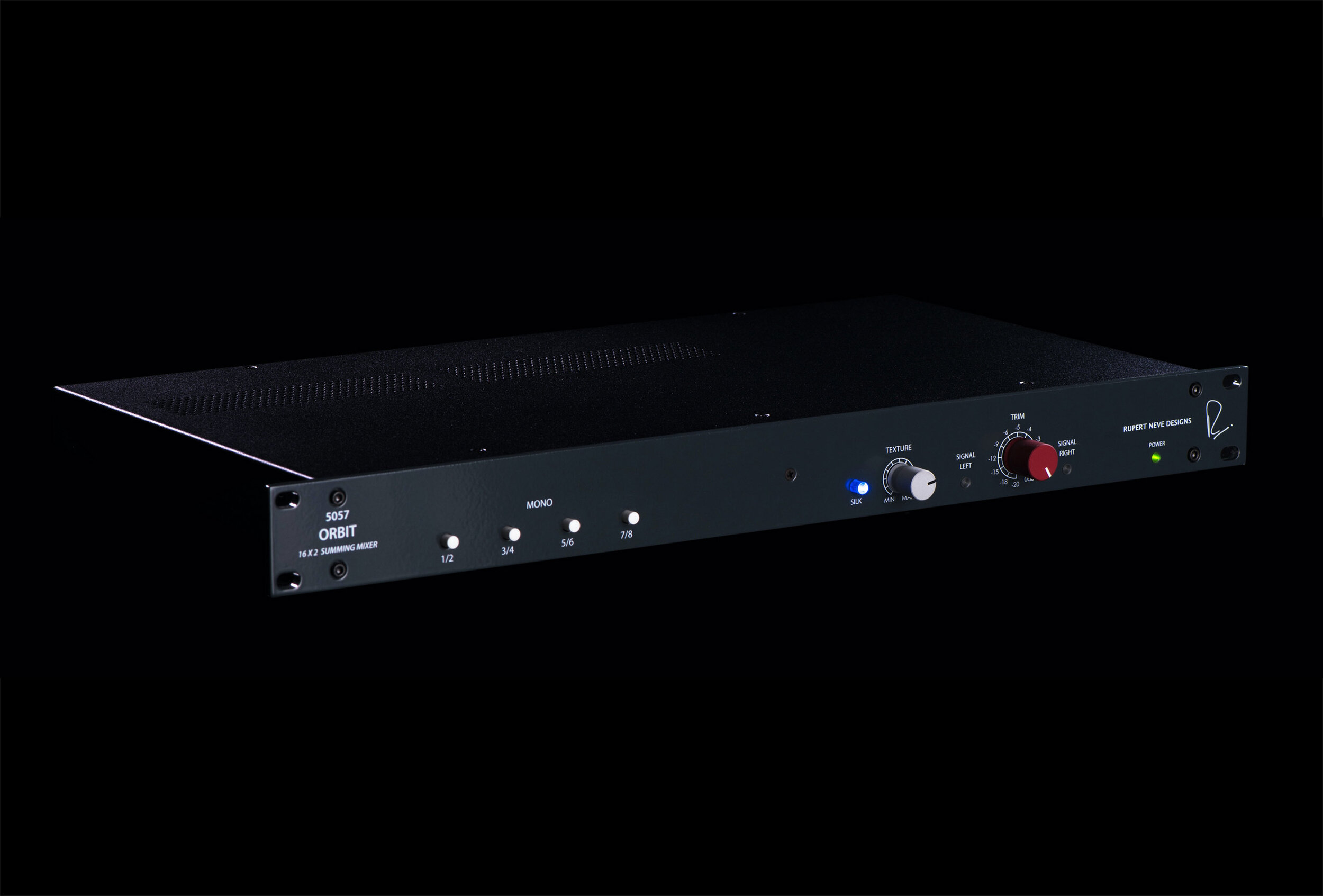
CONTROLS
MONO
Push-button switches that allow the user to MONO sum the first eight input channels, in pairs. Each channel is unity gain from input to output.
SILK
Illuminated push-button switch that toggles between the transformer saturation modes: OFF, RED, BLUE.
TEXTURE
31-detent potentiometer that controls the amount of transformer saturation when SILK is engaged.
SIGNAL LEDS
LEDs that illuminate GREEN to indicate signal is present (-20dBu) and subsequently illuminate RED (+24dBu) when the signal is 2dB below clip point.
TRIM
12-position rotary switch that controls the attenuation level of the Main Output and -6dB Output within a tolerance of +/- 0.1dB.
POWER
Power status indication LED.
FEATURES
16 Channel +/- 21V Class-A mix bus for massive headroom
Silk Red & Blue modes with Texture control to precisely dial in the desired amount of classic tone
Custom Rupert Neve Designs output transformers create rich harmonic character without clipping the next device in the chain
Mono switches enable you to precisely center any mono mix elements like vocals, kick, snare and bass
Exceptional linearity and accuracy, better than +/-0.1dB per channel
Ultra-low crosstalk for wide open stereo imaging and sonic depth
Expandable for higher channel count via bus link to other 5057 units
Repeatable, rapid DAW-based recall while adding the rich, unrivaled sound quality of Rupert Neve Designs
Robust and compact 1U chassis design with DB25 inputs and XLR outputs
Combine with other Rupert Neve Designs summing products to create a world-class modular mix system
REVIEWS
“Having 32 channels of Rupert Neve Designs summing is absolutely central to my set up. The 5057 is so open sounding and happily that characteristic is particularly evident when starting its journey through the 5059 – the 5057 imparts extra clarity. The headroom is spectacular and the detail is amazing.”
Tony Platt
AC/DC, Motörhead, Cheap Trick, Foreigner, Bob Marley and the Wailers
“Since I started using the RND 5057 Orbit and also the 5059 summing mixers as part of my mixing process, I will never go back. I’ve heard the difference before and after and it’s undeniable what it does to the mix. Warmth, width, clarity and depth equals pure analog goodness.”
Brad Divins, FOH Engineer
Disturbed, Enrique Iglesias
“The RND 5057 is absolutely essential for every project I work on. So much so I’ve added a second to my main rig and purchased a third for quick fly dates. The imaging and glue it provides to my mix is incredible and the one-of-a-kind Silk circuit allows me to add harmonic excitement that I can ride during the show to help create moments and dynamics.”
James Butera, Production Manager / FOH Engineer
Halsey, Lizzy McAlpine, Masego
“When I was mixing on Neves or APIs, I tended to always judge things by how wide a mix can get. For the past 8-10 years, I dove into in-the-box mixing like a lot of people, and went back and forth with the different types of summing plugins and combinations of plugins on the stereo bus to try to get me the width of a mix that a console had…there are some great ones out there, but I could never get it to sound wide. I plugged this thing in and about three minutes later I was like, ‘that’s it’…it really does give everybody the chance to have a console.”
Tom Biller
Fiona Apple, Liars, Kate Nash
“The 5057 Orbit has been an incredible addition when I don’t have the room or budget to take the RMP-D8s out but want the sonic size and familiarity of RND. It’s compact, easy to integrate, and I love the ability to use both Red and Blue Silk on the mix when I have the MBC after it.”
Matthew Walsh, FOH Engineer
The War On Drugs, Alvvays, Julien Baker
“I get the tone that I’m used to, the thing that I want, in terms of the sonic texture and transformer drive. But I can work a lot quicker, because I’m not doing a massive recall on a huge console.”
“Having access to something like Rupert Neve quality sonics in a 1U box, that I can kinda just mix through and forget it’s there – it’s the perfect workflow for the modern age.”
Danny Reisch
Other Lives, White Denim
“Mixing live, I don't use much compression on my band bus. The 5057 gives me the ability to drive my band mix into transformer saturation, and also add some Blue Silk, so I have more low harmonics and a rich dense sound. It's great even on very quiet shows - I can bring presence and punch without hurting any ears.”
Chris Hibbins, FOH Engineer
Jann Arden
“High-end console specifications and performance….”
“As would be expected of any RND product, the 5057 Orbit is very well built. It has a useful feature set, twice as many inputs as some of its immediate competitors, and it does the job asked of it superbly, with admirable technical specifications.”
“The critical question, then, is this: does mixing through the 5057 bring something useful to the party? The answer is undoubtedly yes.”
“It does exactly what a good mixer should, while also introducing some controllable colour and character in a musical way which can be helpful in polishing what might otherwise be described as sterile mixes.”
Hugh Robjohns / Sound On Sound
“Having spent time with the 5057, it is clear that the significant headroom, to-the-horizon bandwidth and low noise floor make effortless what can take some fiddling in the digital domain.”
“The effect of driving the 5057 is…akin to pushing a quality mix console’s output, which is in the Neve wheelhouse. The harmonic saturation conjured from the output transformers may differ across mixes, but it is almost always pleasing, imbuing a sense of depth in the way that analogue cheerleaders always bang on about.”
“The 5057 Orbit seems to soak up as much sound you throw at it, then spits it out sounding better. There is more air in the sound, and the harder you drive the Orbit, the further that air seems to expand, imparting a depth and separation to instruments….this summing mixer made a believer out of me."
“For many, many people that are looking at ‘well, what’s a console that’s going to sound ‘high quality’?’ Thirty thousand, forty thousand dollars, to get a quality console – even a used quality console? This is two thousand dollars. Call me impressed.”
“To get this sound that we benefit from, the master bus of a console…I don’t know of anything that sounds this good in this price range. As far as I’m concerned, I don’t want to send it back.”

SPECIFICATIONS & DOWNLOADS
INPUT IMPEDANCE
16K Ohm
FREQUENCY RESPONSE
10 Hz to 50 kHz: +/- 0.1 dB
150 kHz: -3 dB
NOISE
From 22 Hz - 22 kHz.
-90 dBu typical
MAXIMUM INPUT LEVEL
@ 1 kHz: +26 dBu
MAXIMUM OUTPUT LEVEL
@ 1 kHz: +26 dBu
THD+N%
From 22 Hz - 22 kHz.
0 dBu @ 1 kHz: 0.003%
+20 dBu @ 1 kHz: 0.0006%
CROSSTALK
1 kHz: -103 dBu
10 kHz: -93 dBu
PRODUCT DIMENSIONS
19” W (48.3 cm) x 9” D (22.9 cm) x 1.75” H (4.4 cm)
SHIPPING DIMENSIONS
24” L (61 cm) x 13” W (33 cm) x 4” H (10.2 cm)
SHIPPING WEIGHT
10 lbs (4.5 kg)
FREQUENTLY ASKED QUESTIONS
The summing architecture is essentially the same between all three of our Summing Family mixers. They each have different feature sets to address different needs, but sonically they’re all nearly identical. The main exception would be the secondary -6dB output on the 5057, which reduces the likelihood of clipping the next device in the chain when driving the unit very hard, and thus may allow for greater potential harmonic saturation.
64 channels (4 units) is the maximum recommended summing buss size for multiple linked 5057s.
Yes! They are isolated from one another and can be used simultaneously.
If you are looking to fully drive the output transformer to impart the non-linear harmonic content that adds dynamic richness to the sound (and you don’t want to clip your converters) the -6dB output is the way to go. If you want maximum headroom, use the Main output.
Generally people record the mix output into a stereo input in their DAW, but you can also record to an external tape machine or other “2-track” destination. Remember: whatever you do, always have a way to monitor your recorded mix so you can reference the final print.
Not necessarily. We’ve been conditioned to see red peak lights as meaning “bad” – but remember, this is analog, not digital. Oftentimes, the “glued-together” sound we’re looking for from an analog mix buss comes from overdriving the output stage, and this may mean some peaks here and there. Just like with a real analog mixing console, use your ears to tell you when you’re hitting the mix too hard.








